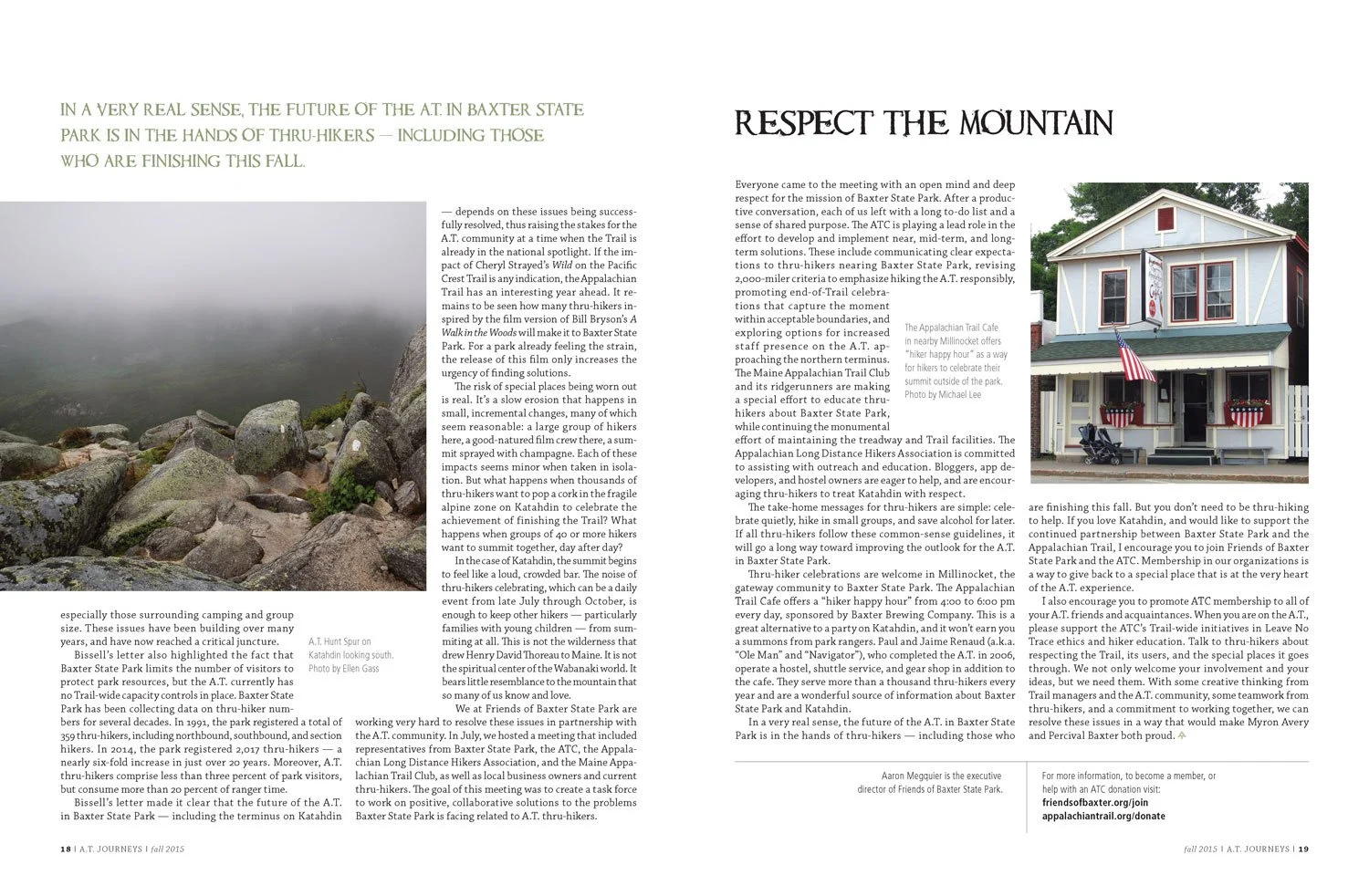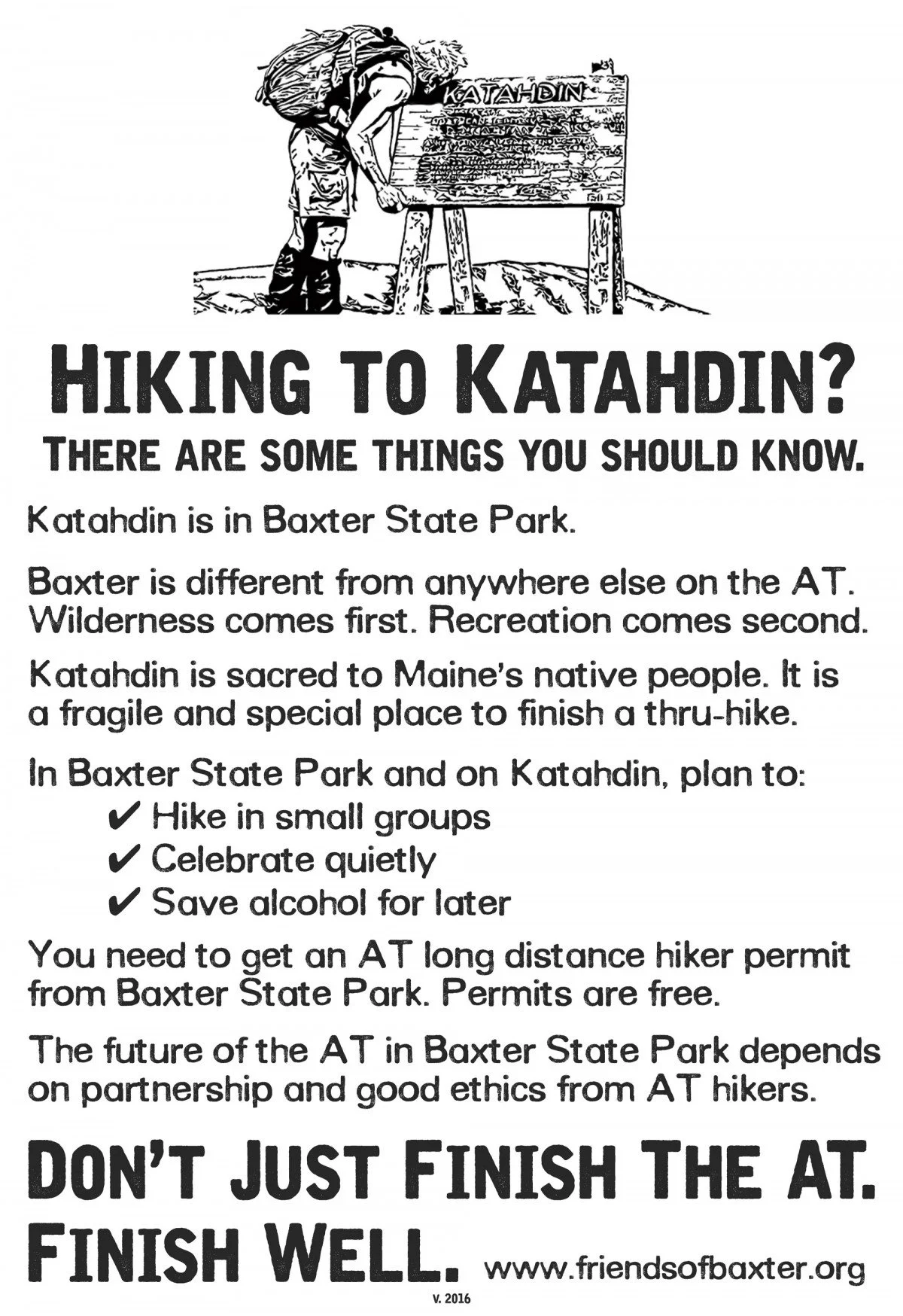
A-T Hikers - Finish Well
For over 80 years, Katahdin has been the northern terminus of the Appalachian Trail (AT). Reaching the summit of Maine’s greatest mountain has taken on a near-mythical significance for northbound thru-hikers. The vast majority of thru-hikers celebrate the end of their 2,185-mile journey responsibly, with a sense of reverence for a very special place. A small but growing number of thru-hikers continue to act in a way that negatively impacts the Park's wilderness values, as well as the experiences of other visitors. This behavior is threatening the future of the AT in Baxter State Park.
Friends of Baxter State Park historically has worked to resolve these issues in a constructive way. It began in 2015 when Friends of Baxter State Park hosted a meeting that included representatives from Baxter State Park, the Appalachian Trail Conservancy, the Appalachian Long Distance Hikers Association, and the Maine Appalachian Trail Club, as well as local business owners and members of the thru-hiking community. Our goal was to work together to find positive, collaborative solutions to the problems Baxter State Park is facing related to AT thru-hikers.
As a direct result of that meeting, Friends launched an ongoing outreach campaign in early 2016 with the goal of encouraging thru-hikers to finish well on Katahdin. Since then we have been a strong advocate for AT hikers to work with the Park to make finishing the AT a positive experience for all concerned.
Are you planning to hike the AT in Baxter State Park? Be sure to read the information provided by the park regarding permits, rules, and regulations. Read: The Appalachian Trail in Baxter State Park
In fall 2015, following a summer of international publicity about thru-hiker behavior on Katahdin, Friends was invited to write a feature article for AT Journeys magazine. This is the member magazine for the Appalachian Trail Conservancy, with a circulation of about 45,000. We focused on educating the AT community about why Baxter State Park and Katahdin are different than anywhere else on the trail, and positive steps that all hikers can follow to reduce impacts on Katahdin.




